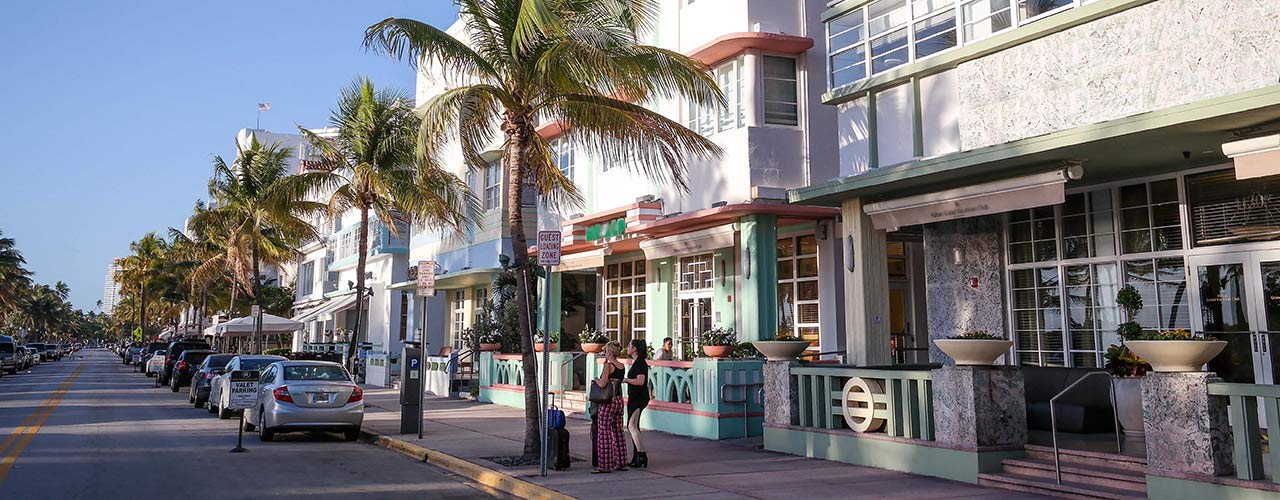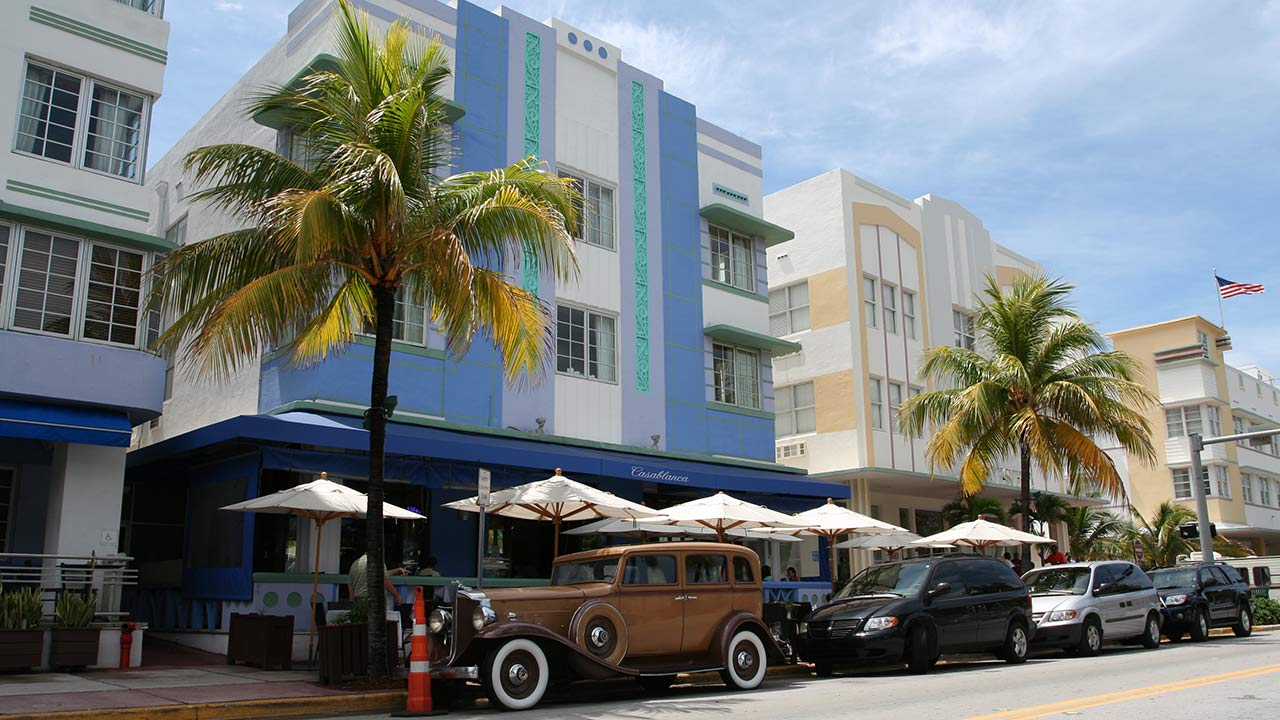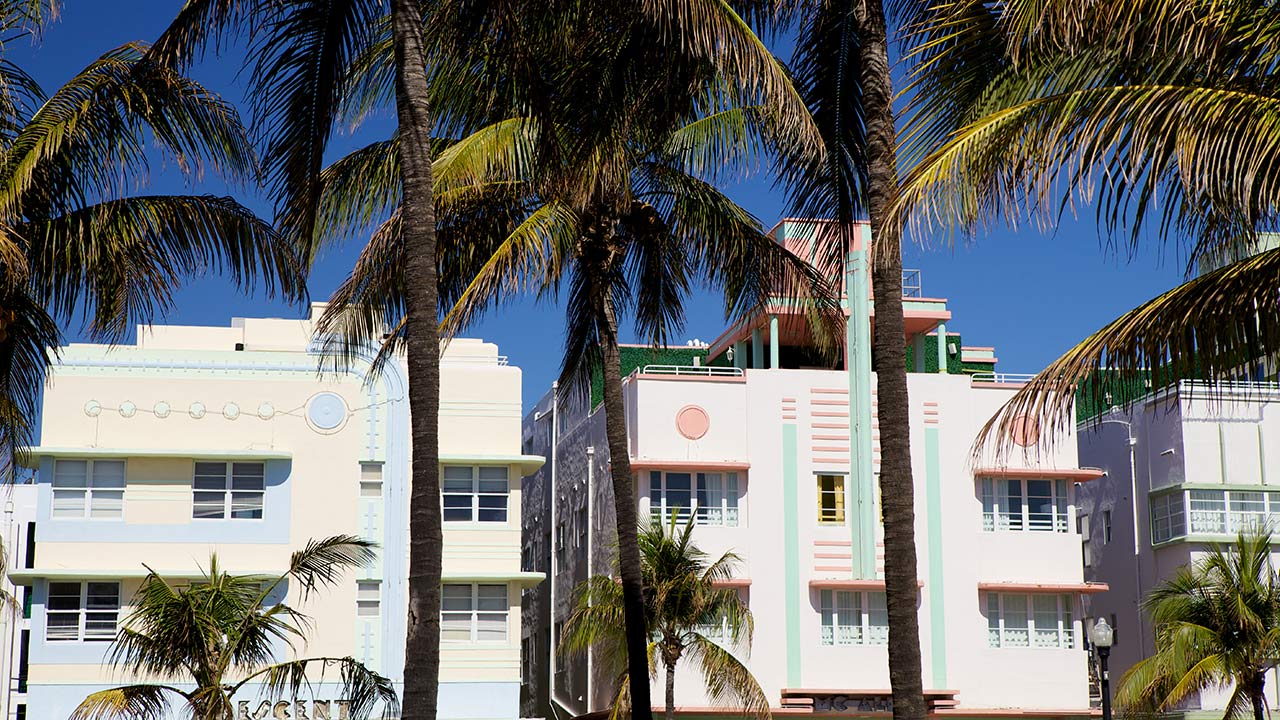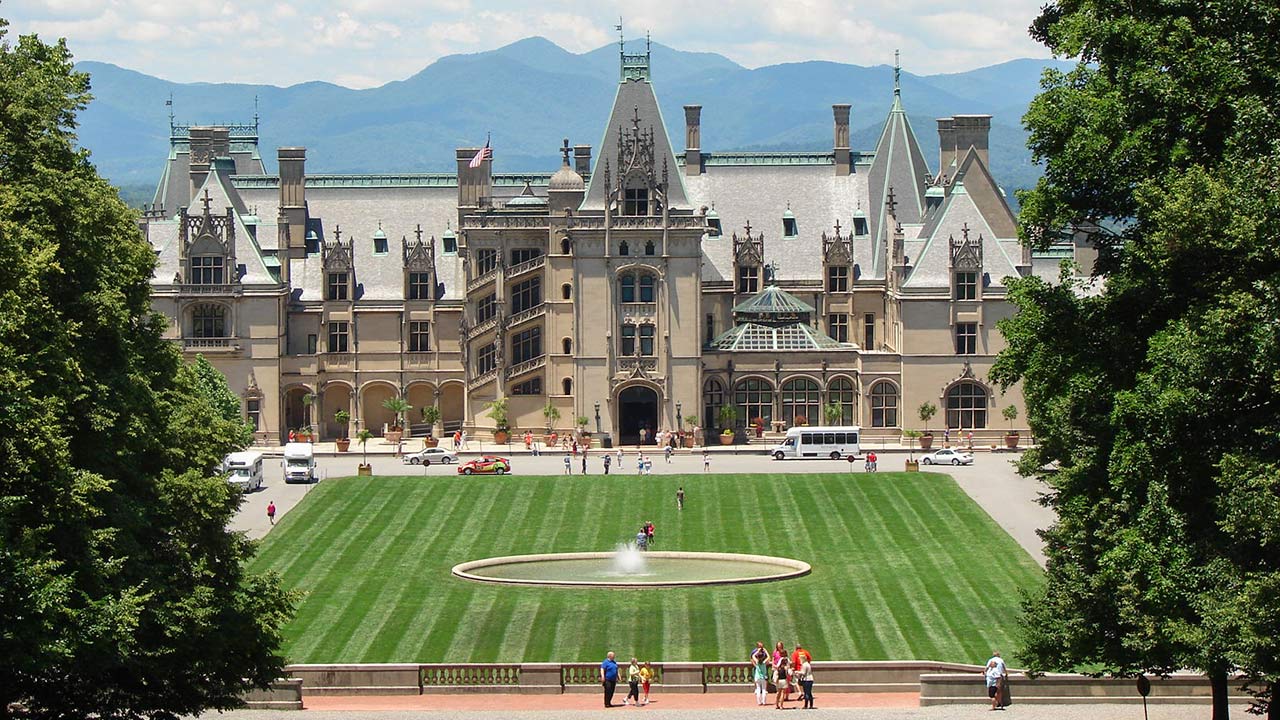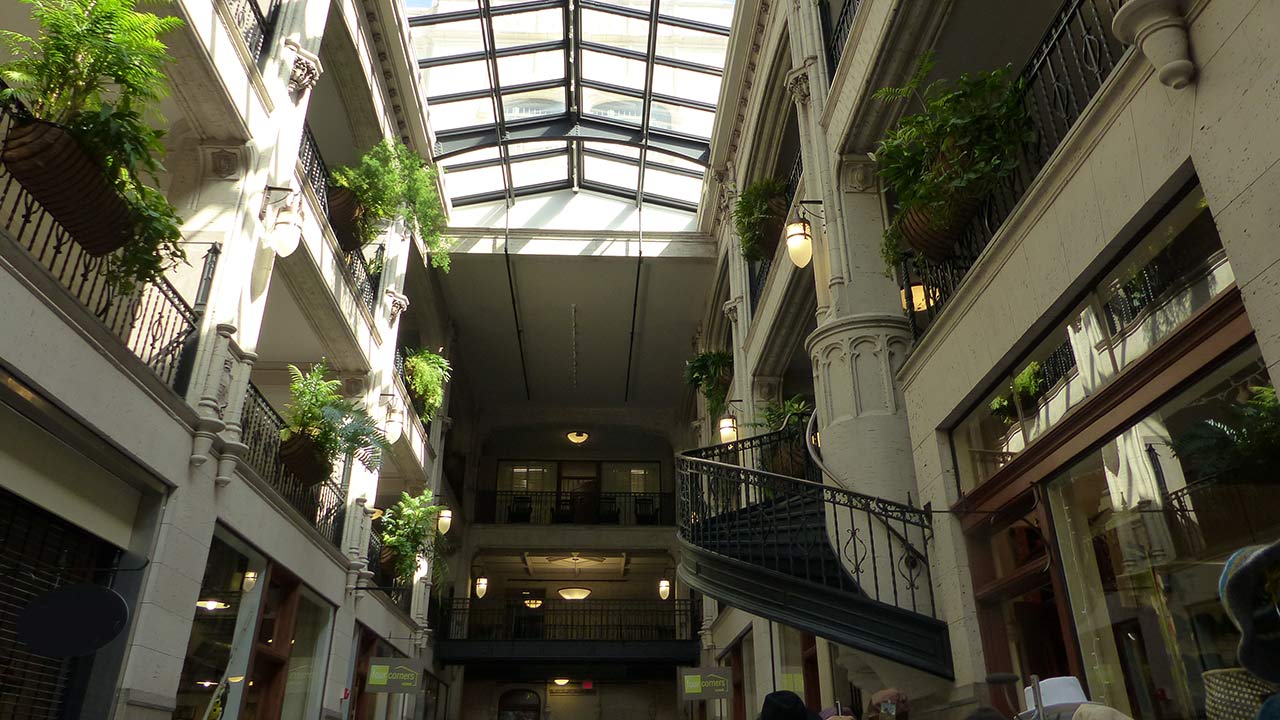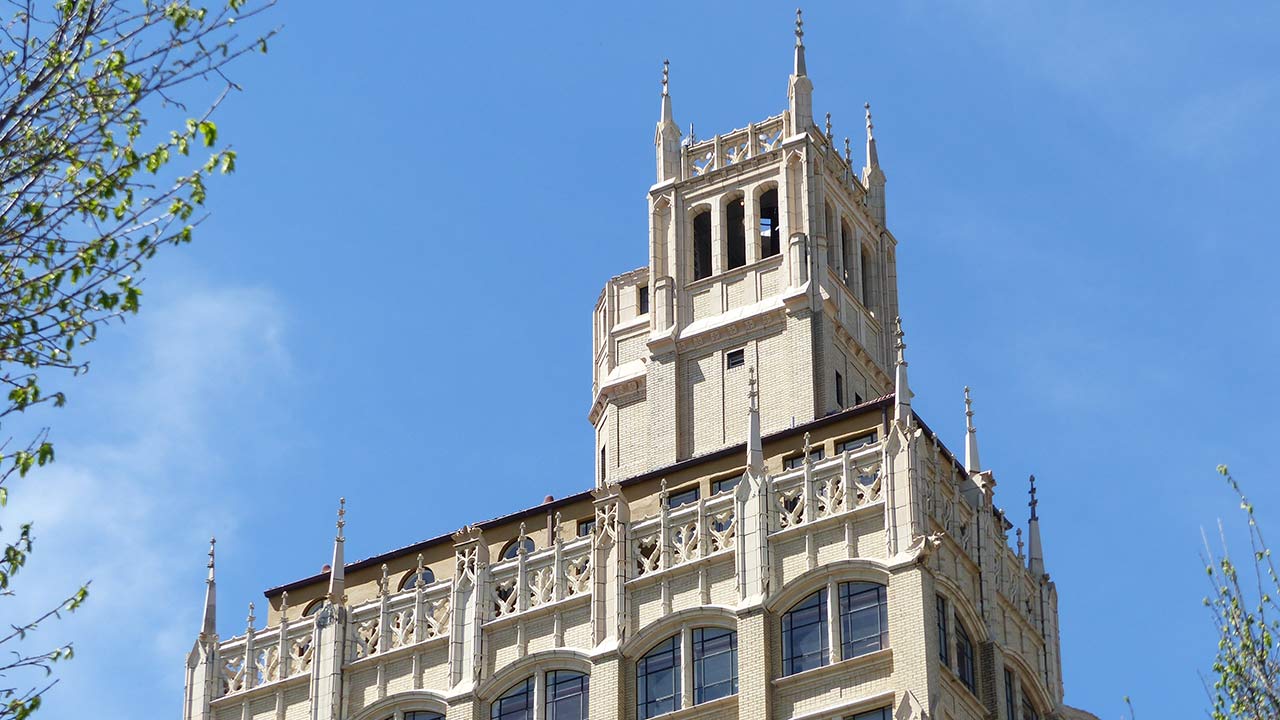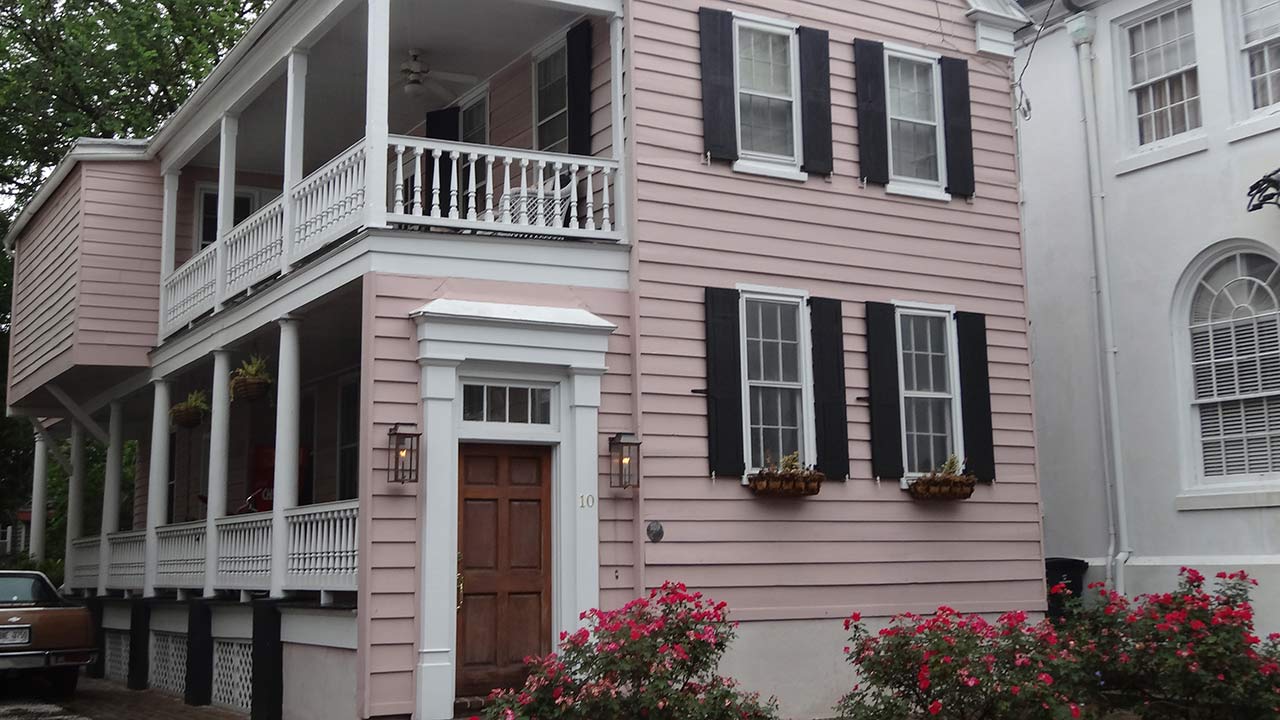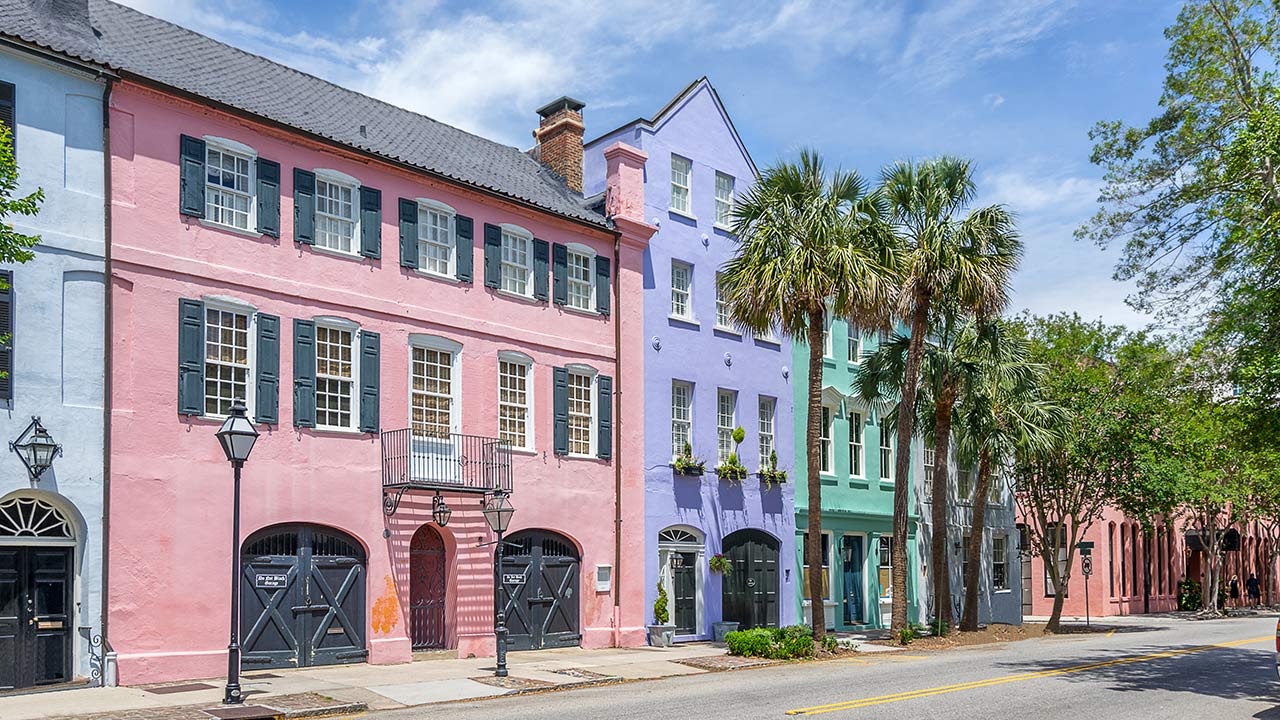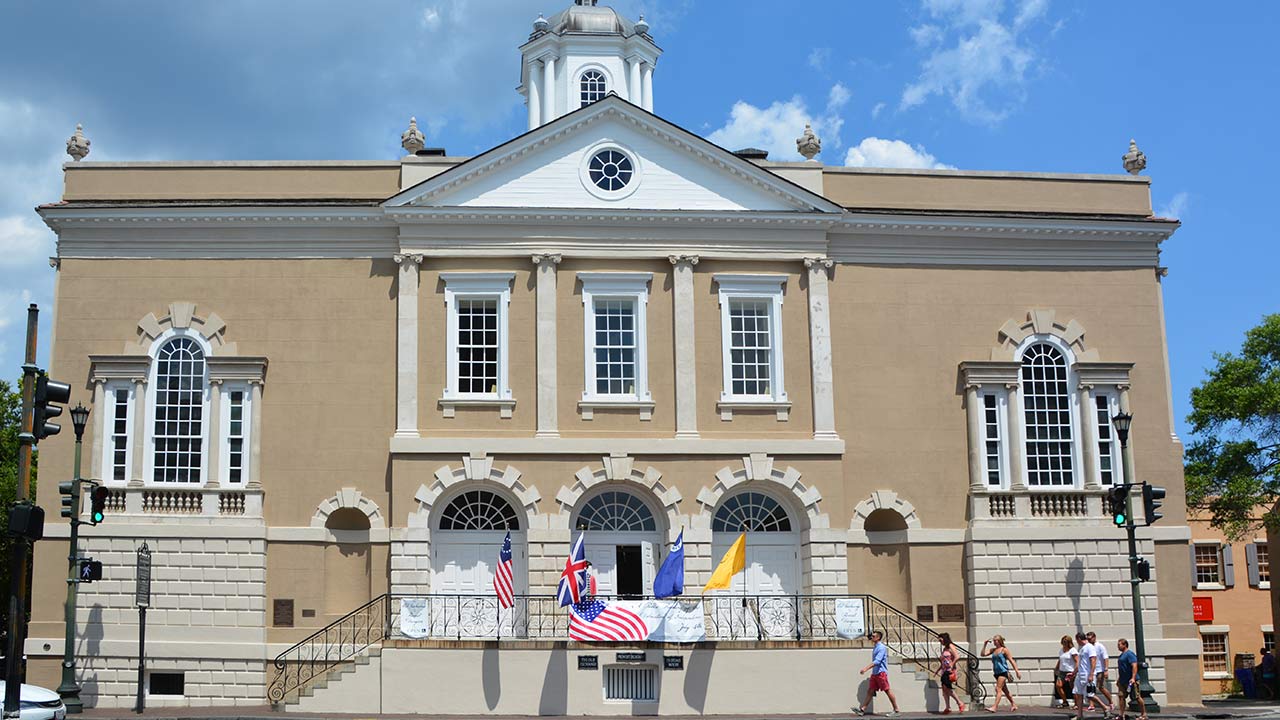You probably see the same old buildings daily — your home, your workplace, your local grocery store. But architecture isn’t only meant to be functional. Sometimes it can be beautiful, too.
Rich in history, the Southeast is full of extraordinary buildings from various periods. And many of those buildings are concentrated in the same cities! Here’s a lineup of three remarkable cities with fascinating architectural styles in the Southeast.
Miami Beach, Florida
Architecture: Art Deco
Colorful, vibrant, alive — that’s Art Deco! And that’s also Miami Beach, the nation’s hotspot for buildings and attractions with the Art Deco style.
Miami Beach’s Art Deco Historic District hails from the ‘20s and ‘30s, when Art Deco first came to America. The area has more than 800 designated historic buildings, most of which bear the iconic neon colors, geometric curves and chrome accents of the architectural style.
Many of the buildings are hotels, like Beacon South Beach, Colony Hotel and National Hotel. But other spots like Lincoln Road offer shops, restaurants and bars, while Lummus Park provides a stunning view of the Art Deco skyline. The Miami Design Preservation League offers daily walking tours so you can see the sights.
But there are other things to do in Miami Beach, too. Consider a kayak tour through crystal-clear waters and winding mangroves. Or continue your design appreciation at The Bass, a contemporary art museum; housed in an Art Deco building, the space served as the first art exhibition space in South Florida.
You can also grab a bite at one of the area’s world-class restaurants – as stunning inside as they are outside. Near The Bass, Jaya at The Setai features tandoor oven cuisines in a setting that can only be described as an indoor tropical oasis. Le Jardinier in Miami’s Design District is a casual yet upscale French restaurant known for its vegetable-forward menu and midcentury-inspired design, accented with lush greenery. For a more laidback option, check out Doya, serving modern Mediterranean fare, in Miami’s Wynwood neighborhood, home of murals and large-scale works by some of the world’s most well-known street artists.
Asheville, North Carolina
Architecture: Neoclassical, Romanesque Revival, Gothic and more
Many of these beauties can be seen on Asheville’s Urban Trail, a 1.7-mile walking tour through the streets of downtown Asheville. The Grove Arcade, for instance, first opened in 1929 as a sprawling indoor mall marked by Gothic gargoyles and decorative ironwork. Then there’s the Drhumor Building, built in 1895 and reminiscent of the Romanesque Revival with heavy brick walls and round curves.
But the Biltmore House is perhaps the town’s jewel. Completed in 1895, the Biltmore House is a sprawling, 250-room French Renaissance-style château built by George Vanderbilt. The Vanderbilts were once the wealthiest family in the nation, amassing riches through investing in steamboats and railroads.
If you want to extend your stay in Asheville, the area offers plenty of options. The Biltmore House itself has a few lodging options, but you could also stay at the nearby Haywood Park Hotel, which used to be a department store. The free North Carolina Arboretum has acres of curated gardens and trails to explore. And for something to eat, try out The Odd, a dive bar and restaurant with off-beat decor and design.
Charleston, South Carolina
Architecture: Charleston-style, Georgian, Gothic Revival, and more
When it comes to architecture, Charleston, South Carolina, has a unique story. In 1931, it was the first city to have a historic district recognized by the Board of Architectural Review.
And there’s a good reason for that. While Charleston hosts buildings hailing from a wide range of styles, it also has its own moniker: Charleston-style homes. Unique to the area, these homes were mainly constructed in the early 1700s and feature tall and narrow fronts, a small front porch and either one or two levels.
But there’s more to Charleston than Charleston-style architecture. St. Michael’s Episcopal Church, the area’s oldest surviving church, features clocks and bells from colonial times and has the Georgian hallmarks of balanced columns and pent roofs. Meanwhile, the Charleston City Market stretches for four city blocks, decked out in Greek Revival features like an open layout and tall windows.
Charleston has more to offer than beautiful buildings. Have a picnic at the scenic Riley Waterfront Park, or take a spooky nighttime ghost tour. Get a taste of the Lowcountry at Virginia’s on King, which blends comfort food with regional dishes. And you can’t miss staying at Zero George Street, a series of restored buildings from 1804 near downtown.
Build your own adventure
With all these architectural options on the table, your eyes are ready for a feast! If you’re looking for something different, consider visiting one of these locations in your Toyota. Maybe it can even be a weekend trip!

